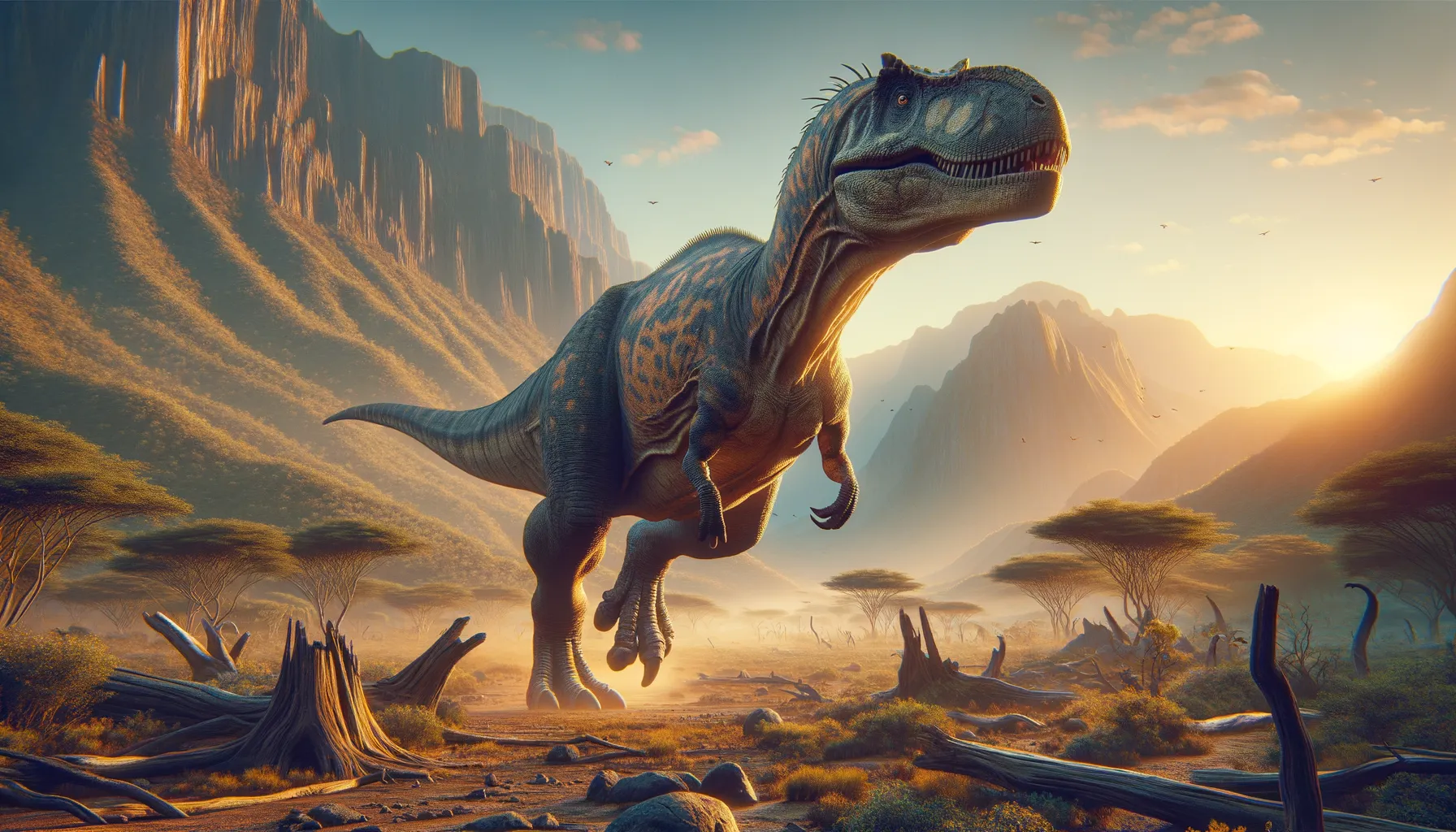
Mansourasaurus
Discover the last African giants of their era.
Period
Cretaceous
Length
Measured about 33 feet from head to tail.
Height
Stood around 9 to 12 feet tall at the shoulder.
Weight
Weighed approximately 5.5 tons, similar to an African elephant.
Mansourasaurus was a titanosaurian sauropod dinosaur that roamed the lands of what is now Africa during the Cretaceous period. Its discovery was significant as it filled crucial gaps in the understanding of dinosaur evolution and distribution between Africa and Europe. With its hefty size and herbivorous diet, it showcases the diversity of life that existed in Africa as the dinosaurs faced their last epoch before extinction.
Diet
Mansourasaurus was herbivorous, feeding primarily on plants. Its long neck allowed it to reach plant material high in trees and deep in bushes.
Hunting
Being a herbivore, Mansourasaurus did not hunt. Instead, it likely spent a substantial amount of time grazing on vegetation and ensuring it had enough intake to sustain its massive body.
Environmental challenges
Mansourasaurus lived in a dynamic ecosystem that included large predators, so it needed to be wary of carnivorous dinosaurs. Its large size would have offered some protection against attackers. Additionally, changes in climate and habitat during the Late Cretaceous may have posed challenges in finding enough food and suitable living conditions.
Speed
Mansourasaurus was likely slow-moving, typical of large sauropods.
Lifespan
Estimated to live several decades, common for large dinosaurs.
First discovery
First discovered in 2013 by a team led by Hesham Sallam in Egypt.
Fun Facts
- Mansourasaurus was a dinosaur that lived about 80 million years ago during the Late Cretaceous period.
- It was discovered in Egypt and is one of the most complete dinosaur fossils found in Africa.
- Mansourasaurus was a titanosaur, a group of long-necked, plant-eating dinosaurs known for their size.
- This dinosaur was roughly the length of a school bus, making it a gentle giant in its ecosystem.
- The discovery of Mansourasaurus helped scientists learn about the migration of dinosaurs between Africa and Europe.
- Mansourasaurus' bones were found by a team led by Egyptian scientists, showcasing the growing research efforts in paleontology within Africa.
- It had a body structure that suggests it was well-suited to browsing vegetation at different heights.
Growth and Development
Like other sauropods, Mansourasaurus would have hatched from eggs, growing rapidly in its early years to escape predation. As it matured, it likely slowed in growth but continued to gain mass to reach its full size. This growth pattern is typical among large dinosaurs, allowing them to quickly pass through vulnerable juvenile stages.
Habitat
Mansourasaurus inhabited lush, vegetated areas that provided ample food resources. These environments were probably warm and slightly humid, supporting a variety of plant life. The region where it lived was a part of the land bridge facilitating the movement between Africa and Europe.
Interaction with other species
As a large herbivore, Mansourasaurus likely coexisted with other dinosaur species, both herbivores and carnivores. Its presence may have influenced the structure of local ecosystems, particularly in how plant life was distributed and consumed. Competition for resources with other herbivores would have been a natural part of its interaction.
Natural lifespan
Mansourasaurus likely had a natural lifespan extending several decades.
Reproduction
Mansourasaurus reproduced via eggs, like most dinosaurs. Nesting likely occurred in communal areas, providing some measure of protection from predators. Incubation would have depended on environmental heat, as parental care in dinosaurs was typically low.
Social behaviour
While the specifics of its social behavior are unknown, Mansourasaurus may have lived in small herds for protection and social interaction. Herding could facilitate finding food sources and provide a mechanism for mutual defense.
Fossil locations
The primary fossils of Mansourasaurus have been discovered in Egypt. This site provides crucial insight into the distribution of dinosaurs in Africa during the Late Cretaceous. The find enhances the understanding of continental connections during this period.
